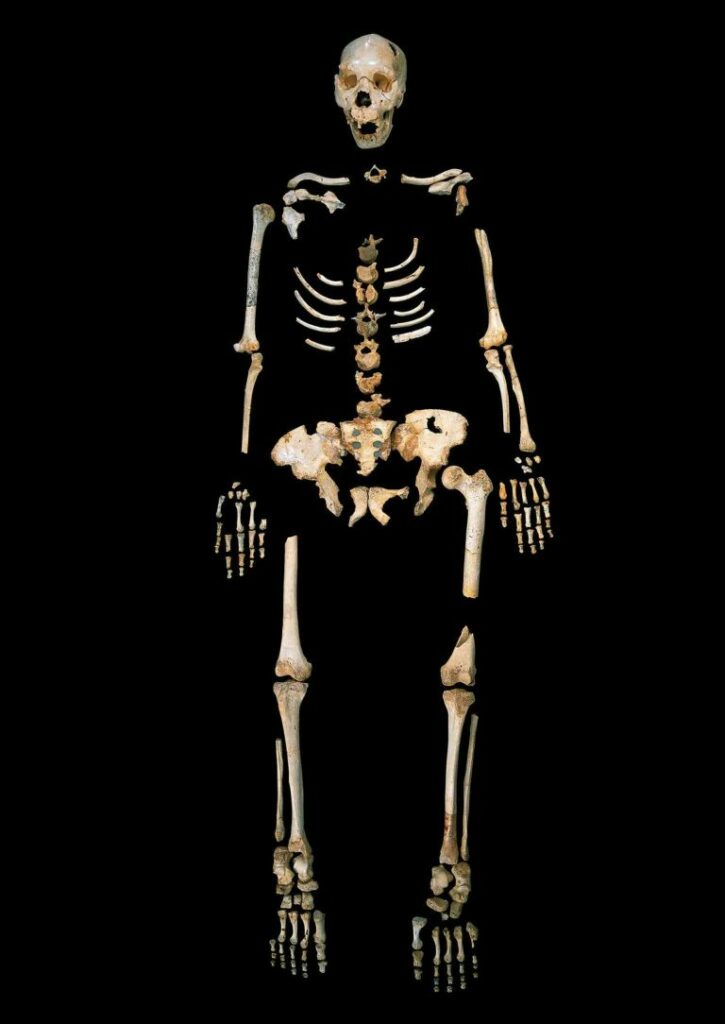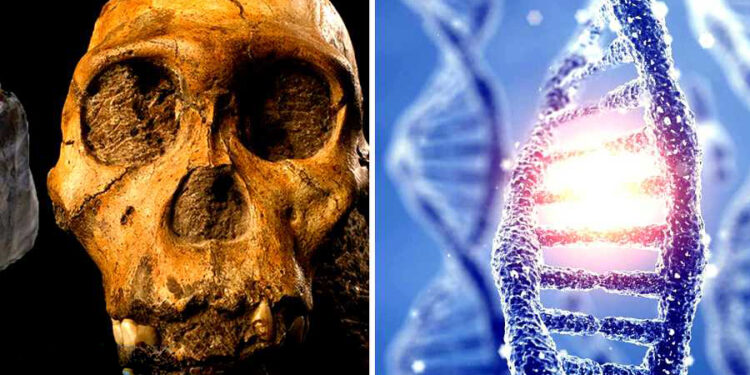There is no convincing evidence on how humans appeared on Earth. Science has given some theories on human origin but it does not please everyone. There are a number of experts who supports the ancient astronaut theory that is widely acclaimed by people around the world. In 2013, scientists discovered the oldest human DNA evidence from a 400,000-year-old thigh bone. Instead of solving the human history on Planet Earth, it deepened the mystery, hence baffled scientists.
Our ancestors’ origins may be revealed by the discovery of 400,000-year-old human remains in Sima de los Huesos site (Spanish meaning “Pit of bones”), a cave 43 feet below the surface of northern Spain. Although the bone is human, it has “ALIEN DNA.” This astounding discovery has caused scientists to reevaluate everything they believe to be true about human evolution.
The ancient bones from which the genetic material was discovered in Spain have been attributed to the Neanderthals, but the Denisovans, a different ancient human group from Siberia, have a genetic profile that is strikingly similar.
Since its discovery in the 1970s, the Pit of Bones and the bones it contains have been the subject of extensive research. The bones of 28 ancient people, provisionally identified as Homo heidelbergensis, dating back hundreds of thousands of years have thus far been discovered. Due to their size and shape, it was initially assumed that the 400,000-year-old bones belonged to Neanderthals, an extinct species of ancient hominin that was on a different branch of the evolutionary tree than our forefathers.

The DNA that was extracted from these prehistoric bones hints that there may have been many more ancient human species than previously believed. Another hypothesis is that these unidentified individuals discovered in the Pit of Bones were the Neanderthals’ and Denisovians’ common ancestors. The mitochondrial DNA may have vanished from the Neanderthals at some point but persisted in the Denisovians, according to the study’s authors.
“Now we have to rethink the whole story,” said Juan Luis Arsuaga, a paleoanthropologist at Universidad Complutense de Madrid and co-author of the paper. He was dubious that the Denisovans were spread out across much of the Old World, from Spain to Siberia, masquerading as the Neanderthals.
The methods for recovering DNA fragments were invented by Svante Paabo of the Max Planck Institute and his colleagues, who published a snippet of DNA from a Neanderthal fossil that was roughly 40,000 years old in 1997. Following their first success, they and other researchers expanded on it by looking for DNA from other Neanderthals.
In 2006, a team of French and Belgian researchers obtained a fragment of Neanderthal DNA dating back 100,000 years, which until the 2013 discovery held the record for the oldest human DNA ever found. The previous revelation helped to provide insight into how the Neanderthals and humans diverged hundreds of thousands of years ago from a common ancestor. Additionally, it demonstrated that roughly 50,000 years ago, humans and Neanderthals interbred.

Homo erectus, an extinct predecessor of modern humans that lived in Africa around one million years ago, could be an unidentified ancestor. The issue is that we have never discovered any H. erectus DNA, so at this time, the most we can do is speculate.
In 2018, scientists published their findings on “dark matter” DNA, which is long, winding strands of DNA with no obvious functions, but it is early identical across all vertebrates, from humans, mice, to chickens. Before, scientists used to think that less than 2 percent of our DNA actually codes for humans, and the rest 98.5 percent of DNA sequences is so-called “junk DNA” that is useless.
Though science is still evolving and trying to understand the purpose of our DNA, some studies seem to show that intracellular, environmental, and energetic influences can change DNA. In biology, epigenetics is the study of heritable phenotype changes that do not involve alterations in the DNA sequence.
Alternative Explanation
However, some theorists have advanced some extremely intriguing ideas. The so-called 97 percent of non-coding sequences in human DNA, according to this argument, are nothing less than the genetic code for extraterrestrial life forms. According to them, some form of highly developed extraterrestrial race deliberately altered human DNA in the distant past, and the unidentified “super-archaic” ancestor of the Sima de los Huesos people may serve as proof of this induced development.
There are numerous ancient carvings that resemble the double helix motif of DNA, which prompted theorists to speculate that our DNA was modified in the distant past. An interesting idea is the concept of the “Third Eye” that ancient cultures were aware of. It is believed that the speculative invisible eye, usually depicted as located in the pituitary gland of the brain, provides perception beyond ordinary sight. The symbols of the pine cone-shaped gland appear connected with strange beings that seem to be conducting some alteration of the “Tree of Life.” To some, the tree appears symbolic of DNA and the human vertebrae.

Do all these points suggest the presence of advanced knowledge used by ancient beings to change the DNA structure? It sounds absurd, however, scientists today seem to be arriving at similar conclusions. It cannot be denied that there is very little known about the vast majority of DNA.























